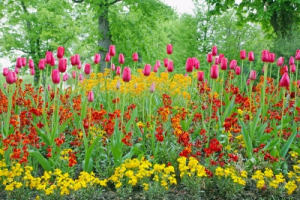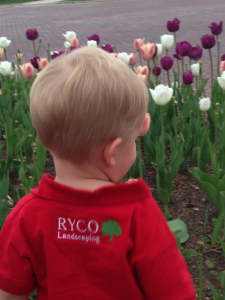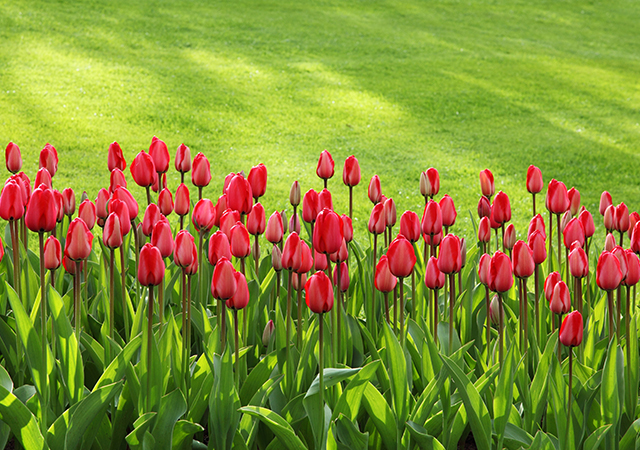
Fall is the perfect time to plan next year’s garden. Not only is it a great time to plan for patios, new gardens and outdoor living areas, but it’s the perfect time to ensure a great color display in the spring. A great way to add early spring color is to plant bulbs in your garden beds in the fall. There are several different types, shapes and sizes of bulbs including tulips, daffodil, crocus and hyacinth. You can add so much color to the early-mid spring garden with bulbs and some even bloom before the snow is melted. Plan now and benefit from it when you’re tired of the dreary winter landscape in early spring.
Most bulbs can be planted throughout fall until the ground freezes. They need to over-winter in the ground before they make their big display in the spring. To plant them, pick a sunny, well-drained area and plant your bulbs three times as deep as the height of the bulb. If the soil is heavy clay, mix in finely shredded wood chips or composted leaf mold. When planting a large bulb bed, dig out all the soil first, arrange the bulbs (usually three to five per square foot) and then backfill with soil. Sprinkle a granular fertilizer (5-10-5) on top, water the bed well and apply a few inches of lightweight mulch. Mulch will stall the soil from freezing early and allow bulbs to develop a strong root system during the fall. Bulbs always look best when planted in large drifts.

If you live in or near a wooded area, it may be necessary to protect your newly planted bulbs from critters storing food for winter. Squirrels, chipmunks, mice, and voles can wreak havoc on bulb beds. These animals prefer crocus and tulip bulbs, but will often dig and discard others. To discourage wildlife from digging and eating bulbs, place chicken wire over the planting area. Wire can be laid an inch or two below the soil surface or laid across the planting bed. Use large gauge wire for larger sized bulbs and smaller gauge wire for smaller bulbs.
You won’t be sorry you planned ahead for a color display in the spring.





